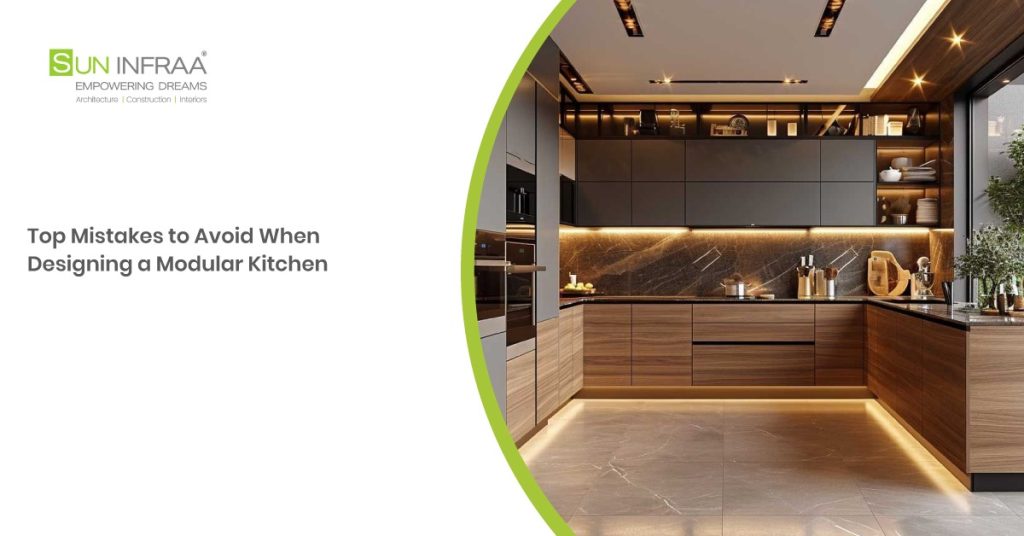Top Mistakes to Avoid When Designing a Modular Kitchen
Designing a modular kitchen requires careful planning to ensure both functionality and aesthetics. One of the biggest pitfalls is inadequate planning and site analysis. Skipping a proper assessment of your space and needs can result in poorly fitting cabinets or crowded layouts . Always measure thoroughly and draft a clear plan before buying materials.
Ignore the Work Triangle: A common error is disregarding the “work triangle” (hob, sink, refrigerator). If these elements aren’t placed at roughly equal distances, meal prep becomes inefficient. Always ensure the stove, sink, and fridge form an easy, unobstructed triangle.
Inappropriate Layout: Using an unsuitable layout can result in space waste. For instance, traffic jams result when a kitchen island is placed in a tiny kitchen. Adapt your arrangement (straight, L-shaped, or U-shaped) to the size of your space and your cooking preferences.
Underestimating Storage: A lot of homeowners neglect their storage requirements, which leads to clutter. There should be plenty of neat storage in a modern kitchen. Incorporate pull-out pantries, corner units and drawer organizers . Plan extra cabinets or tall units to eliminate “dead space” in corners
Material Compromise: It is a mistake to cut costs by utilizing subpar hardware or materials. Low-quality plywood or inexpensive cabinets may eventually warp or break. To prevent frequent repairs, invest in long-lasting finishes (solid fittings, high-quality plywood).
Ignoring Lighting: Task, ambient, and accent lighting should all be used in a kitchen. Dark areas may result from installing just one kind, such as overhead lights. When light sources are neglected, the kitchen appears dim and less useful. To illuminate every work area, add accent lights, bright ambient lighting, and task lights under the cabinets.
Poor Ergonomics: Ignoring the heights and needs of users can cause discomfort. Cabinets and countertops should suit your height. For example, a hob that’s too low or counters too high will strain the back. Also plan for feet space under counters and sufficient legroom.
Skipping Professional Design: DIY planning without expert input often leads to issues like incorrect measurements or overlooked code requirements. It’s wise to consult a designer or use 3D planning tools. Professionals will optimize your layout, ensuring a cohesive and functional kitchen.
Avoiding these mistakes from layout blunders to poor material choices. will help you design a modular kitchen that looks great and works well. A well-planned kitchen respects the “golden triangle,” maximizes storage, and balances beauty with ergonomics.



